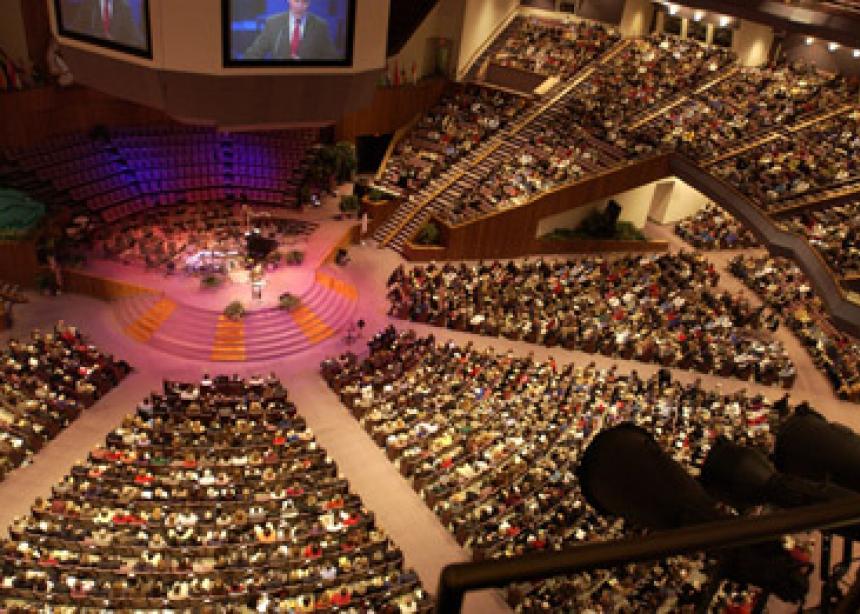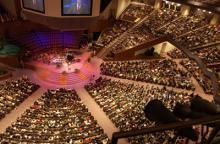Maybe religion really is the opiate of the masses – just not the way Karl Marx imagined.
A University of Washington study posits that worship services at megachurches can trigger feelings of transcendence and changes in brain chemistry – a spiritual "high" that keeps congregants coming back for more.
"We see this experience of unalloyed joy over and over again in megachurches. That's why we say it's like a drug," said James Wellman, an associate professor of American religion who co-authored the study.
The study, "'God is like a drug': Explaining Interaction Ritual Chains in American Megachurches" was presented Sunday (Aug. 19) at the annual meeting of the American Sociological Association in Denver.
Large gatherings of shared experience like concerts and sporting events also trigger feelings of euphoria, said Katie Corcoran, a Ph.D. candidate who co-authored the paper. But, she said, "churches seem to be somewhat unique in that these feelings are not just experienced as euphoria but as something transcendent or divine."
The authors theorize the spiritual high from megachurch services is experienced as an "oxytocin cocktail" of shared transcendent experience and the brain's release of oxytocin, a chemical that is thought to play a part in social interaction. Emotion and group experience have been shown to raise levels of oxytocin.
One congregant reported, "God's love becomes … such a drug that you can't wait to come get your next hit. … You can't wait to get involved to get the high from God."
Another said "you can look up to the balcony and see the Holy Spirit go over the crowd like a wave in a football game," Corcoran said.
Megachurches create this high through their unique style of worship, Corcoran said. Megachurches use technology and appeals to emotion to create a shared experience in congregations that number in the thousands.
"The upbeat modern music, cameras that scan the audience and project smiling, dancing, singing, or crying worshippers on large screens, and an extremely charismatic leader whose sermons touch individuals on an emotional level … serve to create these strong positive emotional experiences," Corcoran said.
The pastor functions as an "energy star" who engages the congregation through an accessible, informal and emotional sermon. Rather than being analytical or theological, the message "just feels right" or "just makes sense" for congregants, Wellman said.
To extend the spiritual high beyond Sunday, churches feature small group activities such as Bible study, book clubs, and volunteer activities, the researchers said. But it is Sunday worship that brings people back.
The study bucks the idea that larger churches produce weaker member commitment; nearly 80 percent of congregants said church size did not hinder their spiritual growth.
An estimated 10 percent of American Protestants – 6 million worshippers – regularly attend one of 1,600 megachurches.
Researchers observed services and conducted 470 interviews and about 16,000 surveys at 12 megachurches for the University of Washington study.
--Aug. 21, 2012
Share this page:



Add new comment
Canadian Mennonite invites comments and encourages constructive discussion about our content. Actual full names (first and last) are required. Comments are moderated and may be edited. They will not appear online until approved and will be posted during business hours. Some comments may be reproduced in print.